Introduction
Nestled high in the Himalayas, at an altitude of over 3,650 meters, Lhasa is not only the capital of the Tibet Autonomous Region in China but also a beacon of spirituality, culture, and resilience. Revered as the “Land of the Gods,” Lhasa has long been the spiritual and administrative heart of Tibetan Buddhism. This mystical city, steeped in tradition and set against a dramatic mountain backdrop, draws pilgrims, adventurers, and cultural enthusiasts alike.
For many, visiting Lhasa is not just a journey across geography but a voyage into a way of life guided by deep-rooted beliefs and ancient wisdom. The allure of iconic landmarks like the Potala Palace and Jokhang Temple, alongside the daily rhythm of chanting monks and prayer flag-laced hills, makes Lhasa an unforgettable destination.
History
Lhasa’s historical roots stretch back to the 7th century, during the reign of King Songtsen Gampo, who is credited with founding the city. His efforts to unify the region and promote Buddhism led to the construction of the Jokhang and Ramoche Temples, which remain spiritual anchors today.
In the 17th century, the Fifth Dalai Lama established Lhasa as the political center of Tibet by constructing the Potala Palace. From that point on, the Dalai Lamas held both spiritual and political authority, and Lhasa thrived as a theocratic stronghold. The city became a vibrant center for Buddhist scholarship, attracting monks, pilgrims, and traders from across Asia.
Following the Chinese annexation of Tibet in the 1950s, Lhasa underwent major transformations, both structurally and politically. Despite political tensions, many of its historical monuments were preserved or restored. Today, parts of Lhasa, including the Potala Palace and Jokhang Temple, are recognized as UNESCO World Heritage Sites, honoring their enduring cultural and architectural significance.
Top Attractions
Potala Palace
Towering above the city on Marpo Ri (Red Hill), the Potala Palace is Lhasa’s crown jewel. This 13-story architectural marvel once served as the winter residence of the Dalai Lamas and houses over 1,000 rooms filled with murals, stupas, thangkas (religious paintings), and ancient scriptures.
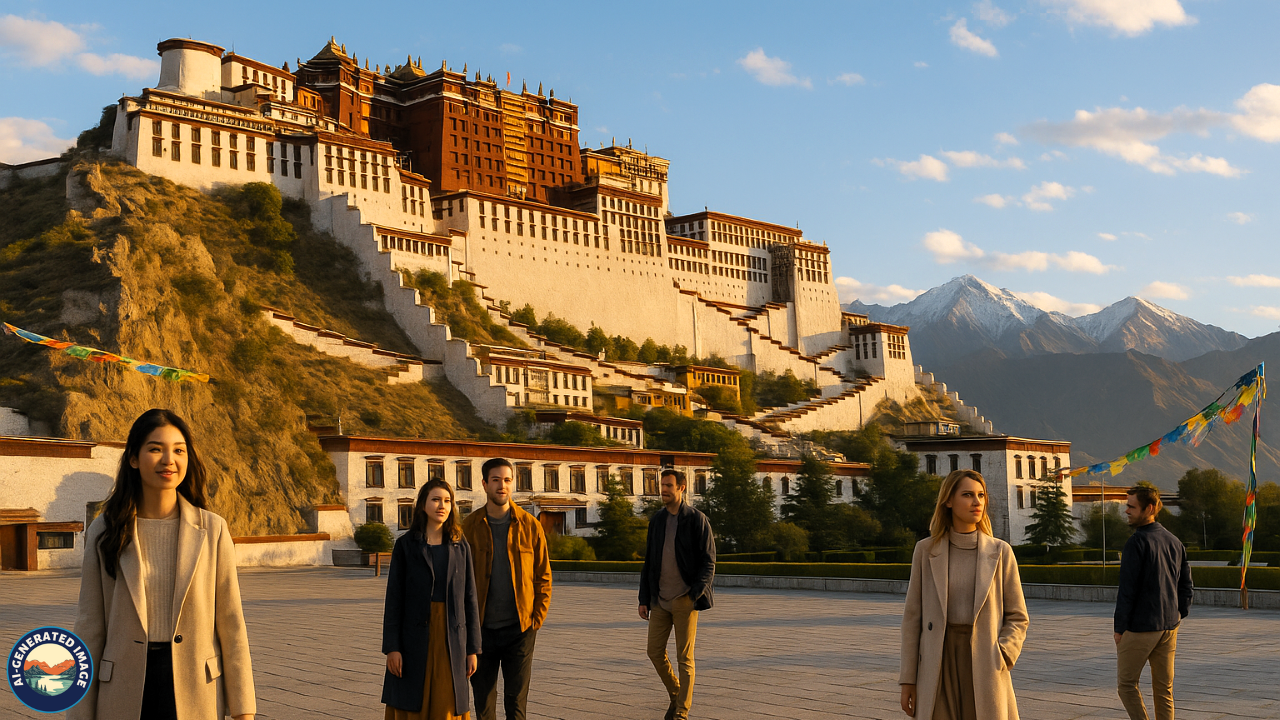
Constructed in the 17th century, the palace blends Tibetan and Chinese architectural styles. Its two sections—the White Palace (administrative quarters) and the Red Palace (religious areas)—reflect the dual nature of Lhasa’s leadership. Climbing the palace steps is a spiritual journey, culminating in panoramic views of the city below.
Jokhang Temple
At the heart of old Lhasa stands the sacred Jokhang Temple, considered the most revered site in Tibetan Buddhism. Built by King Songtsen Gampo, it enshrines the Jowo Shakyamuni statue, believed to be the most venerated image of Buddha in Tibet.
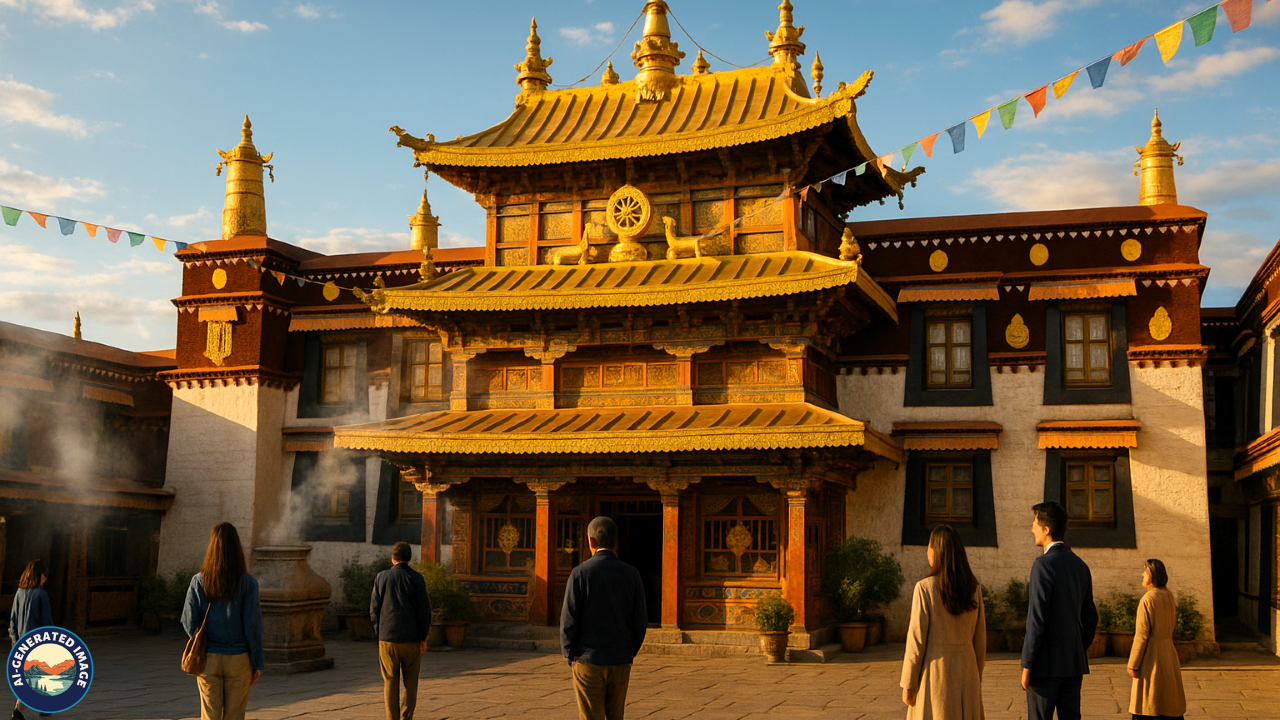
Pilgrims from all over Tibet journey to Jokhang, often prostrating themselves for miles before reaching its golden roof. The scent of burning juniper and butter lamps fills the air, while devotees chant prayers and spin prayer wheels in rhythmic devotion. The temple’s ancient wooden beams and vibrant murals whisper tales of faith, endurance, and legacy.
Barkhor Street
Encircling the Jokhang Temple is Barkhor Street, a vibrant circumambulation path and bustling market. This kora (sacred circuit) is filled with pilgrims, some crawling on their hands and knees, performing acts of devotion.
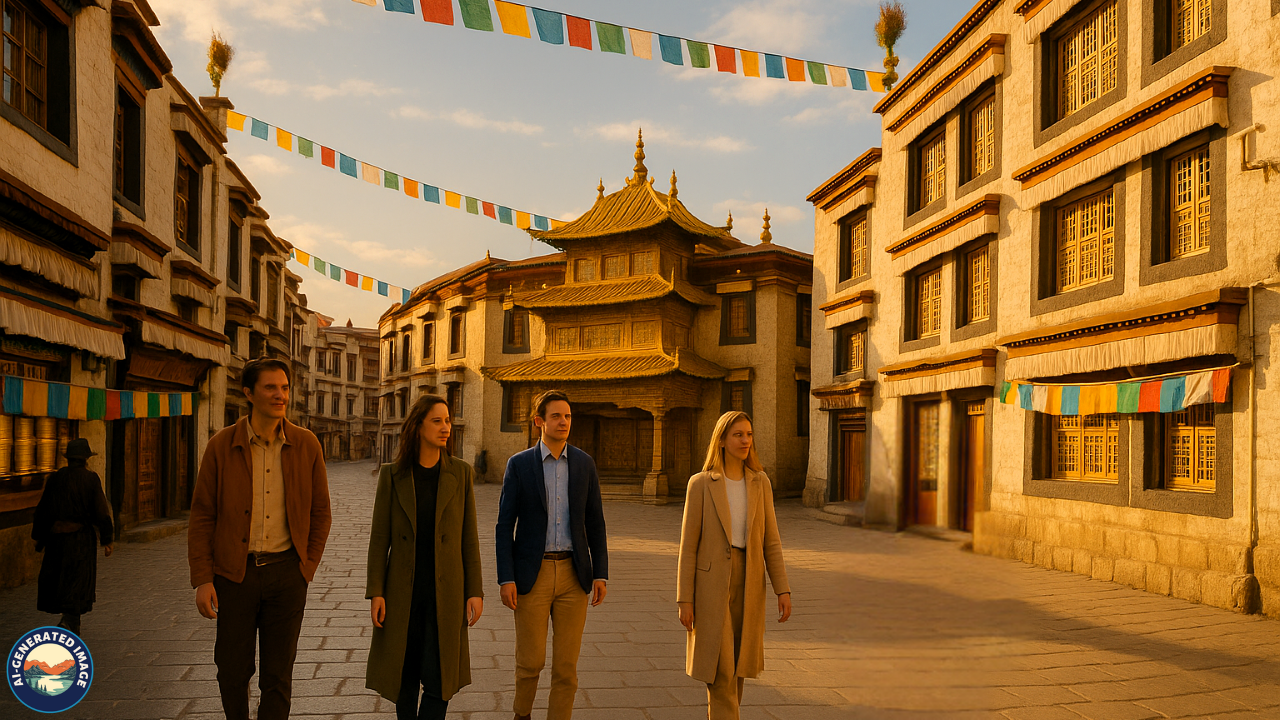
Lined with shops and street vendors, Barkhor offers authentic Tibetan handicrafts—prayer flags, singing bowls, jewelry, and incense. It’s a place where the sacred and the social intersect: a living museum of Tibetan life.
Norbulingka Palace
Norbulingka, meaning “Jewel Park,” was the summer retreat for the Dalai Lamas. Set within sprawling gardens, the palace complex features tranquil pavilions, ornate murals, and shaded pathways. It was built in the mid-18th century and functioned as both an administrative and leisure center.
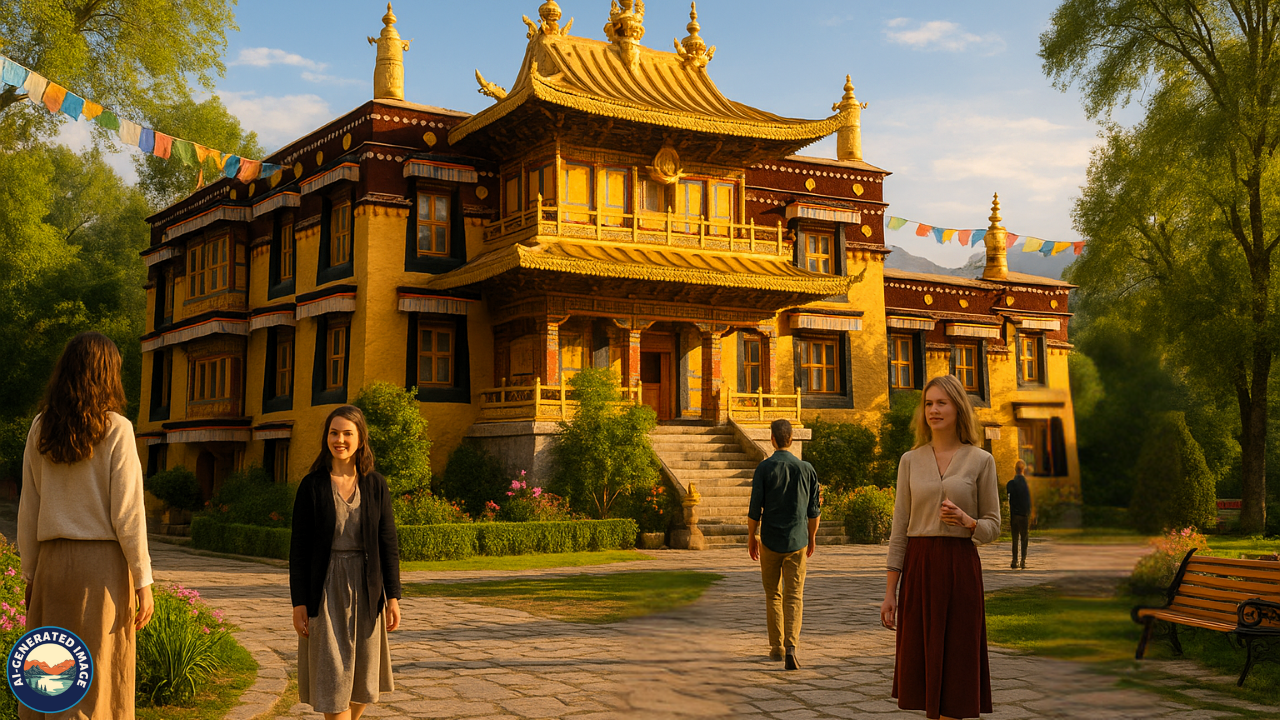
During the annual Shoton Festival, Norbulingka becomes the epicenter of cultural celebration, with Tibetan opera performances and family picnics under the open sky.
Sera and Drepung Monasteries
Sera Monastery is famed for its debating monks, clad in maroon robes, clapping their hands emphatically as they engage in philosophical sparring. Founded in 1419, Sera is one of the “great three” Gelug university monasteries of Tibet.
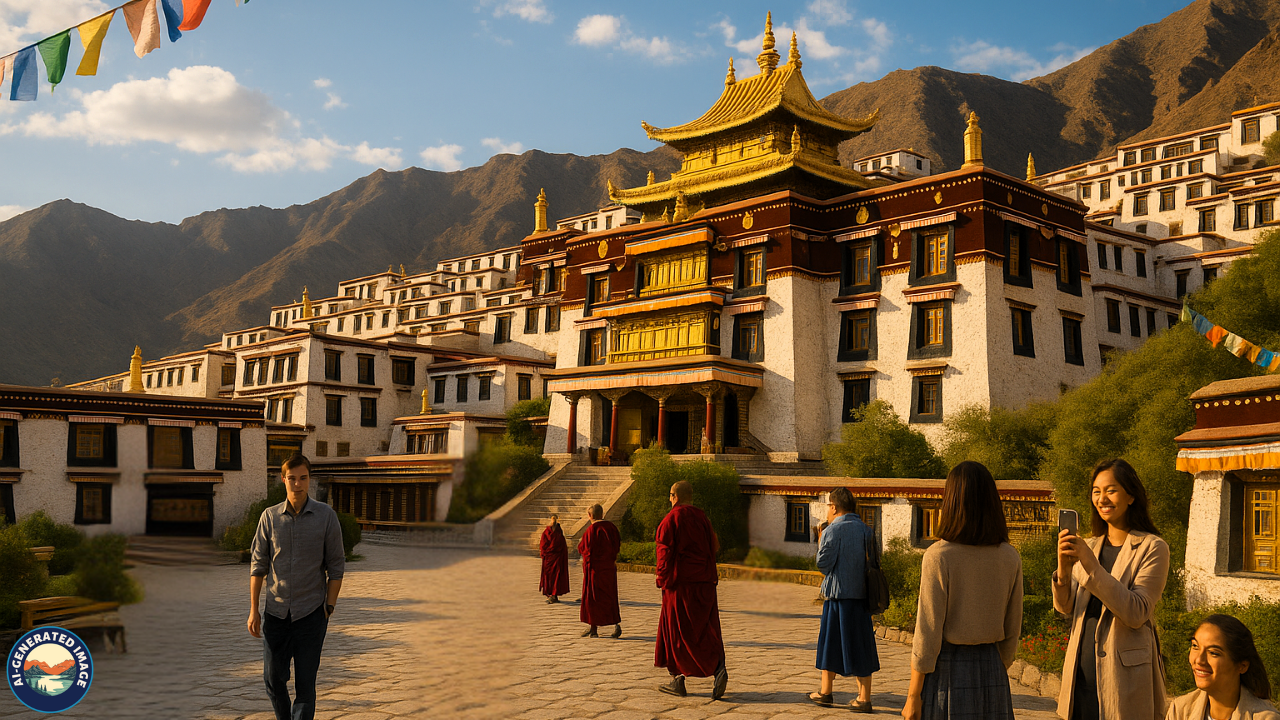
Drepung Monastery, once the largest in the world, housed up to 10,000 monks at its peak. Its whitewashed buildings and tiered layout cling to the hillside, offering breathtaking views of Lhasa and the valley beyond.
Ramoche Temple
Often overshadowed by Jokhang, Ramoche Temple is equally important. It originally housed the Jowo Shakyamuni statue before it was moved to Jokhang. The temple’s design reflects a blend of Tibetan and Chinese styles and serves as a quieter, yet profound, spiritual destination.

Tibetan Buddhism and Spiritual Life in Lhasa
Tibetan Buddhism is not just a religion—it is a way of life in Lhasa. From the fluttering of multicolored prayer flags to the chanting of mantras, the city is alive with spiritual energy.
The daily life of many Lhasans revolves around rituals: spinning prayer wheels, performing kora around sacred sites, and offering yak butter at shrines. Monasteries remain active centers of teaching and meditation, and many residents live by Buddhist principles such as compassion, humility, and non-violence.
Visitors often encounter monks deep in meditation or chanting sutras. While monasteries are open to tourists, entering respectfully and observing local customs is vital. The pervasive spirituality gives Lhasa a peaceful rhythm that contrasts sharply with modern urban life.
Unique Tibetan Culture and Traditions
Lhasa’s culture is a colorful tapestry woven with spirituality, resilience, and a deep connection to the land. Traditional Tibetan clothing, such as chubas (long-sleeved robes), is still worn proudly during festivals and in cold weather.
The performing arts thrive through Tibetan opera, known as “Lhamo,” and folk music featuring the dranyen (Tibetan lute). Art is sacred—Thangka paintings and mandalas are both artistic and meditative.
Craftsmanship is a vital part of cultural identity. Visitors can observe artisans making intricately carved wooden furniture, incense sticks, or handcrafted jewelry. These crafts are often passed down through generations, preserving centuries-old techniques and symbolism.
Festivals and Events
Tibet’s lunar calendar is filled with festivals that celebrate spiritual milestones and communal joy. In Lhasa, these festivals are occasions of vibrant color and reverent celebration.
Losar (Tibetan New Year)
Losar marks the beginning of the Tibetan calendar and is celebrated with offerings, family feasts, and traditional dances. Homes are cleaned to sweep away misfortunes, and prayer flags are replaced to renew blessings.
Saga Dawa
Commemorating Buddha’s birth, enlightenment, and death, Saga Dawa is considered the holiest time for Buddhists. Pilgrims perform kora around Mount Kailash and monasteries, and acts of charity are encouraged.
Shoton Festival
The “Yogurt Festival” begins with the unveiling of a giant Buddha Thangka at Drepung Monastery and continues with Tibetan opera at Norbulingka Palace. It’s a joyful, family-oriented event filled with performances and picnics.
Scenic Natural Beauty Around Lhasa
Lhasa’s spiritual grandeur is amplified by its natural surroundings. The valley is flanked by snow-capped peaks and crystalline rivers, offering a serene and almost otherworldly setting.
Yamdrok Lake
About 100 kilometers southwest of Lhasa, this turquoise lake is considered sacred. It’s a tranquil spot for reflection and photography, framed by snow-tipped mountains.
Namtso Lake
One of the highest saltwater lakes in the world, Namtso’s mirror-like surface reflects the sky so vividly that it blurs the boundary between land and heaven.
These landscapes are not just beautiful—they are deeply spiritual. Each lake, mountain, and valley is believed to be the abode of deities or spirits, reinforcing Tibetans’ harmonious relationship with nature.
Local Cuisine
Lhasa’s cuisine is shaped by its high-altitude geography and nomadic roots. Hearty, energy-rich dishes dominate the menu, designed to sustain people through harsh winters and thin air.
Tsampa
A staple food made from roasted barley flour mixed with tea or yogurt. It’s nutritious, portable, and central to Tibetan identity.
Yak Butter Tea (Po Cha)
A blend of black tea, yak butter, and salt, this tea provides energy and hydration. The taste is unique, often acquired, but culturally significant.
Momos
Tibetan dumplings filled with meat or vegetables, steamed or fried. A favorite among both locals and tourists.
Thukpa
A warm noodle soup made with vegetables, meat, and spices—perfect for the chilly climate.
Local restaurants offer these traditional dishes alongside Chinese, Nepali, and even Western influences. Vegetarian options are also widely available, particularly around religious sites.
How to Reach
Entry Permits
Foreign visitors must obtain a Tibet Travel Permit, arranged through a Chinese travel agency and usually requiring a pre-booked tour.
By Air
Lhasa Gonggar Airport (about 62 km from the city) connects to major Chinese cities like Beijing, Chengdu, and Xi’an. The scenic flight over the Himalayas is a highlight in itself.
By Train
The Qinghai–Tibet Railway is an engineering marvel and the highest railway in the world. Departing from cities like Xining or Chengdu, it offers slow acclimatization and unforgettable views.
By Road
While overland travel from Kathmandu via the Friendship Highway is possible, it is tightly regulated and requires group travel with permits.
Best Time to Visit
The best time to visit Lhasa is from April to October, when the weather is relatively mild and many festivals take place. Summer (June to August) is warm with clear skies, ideal for sightseeing.
Winter (November to February) brings fewer tourists and lower prices, but the cold can be intense. The altitude makes any season chilly at night.
Avoid the monsoon season (July to August) if planning remote treks, though Lhasa itself sees limited rainfall.
Accommodations
From luxury hotels to traditional guesthouses, Lhasa offers a range of accommodations:
-
St. Regis Lhasa Resort –
-
Luxury with views of the Potala Palace
-
Tashitakge Hotel –
-
Traditional decor and central location
-
Yak Hotel –
-
Budget-friendly and popular with backpackers
Most accommodations offer oxygen services and are located near major landmarks. For a more immersive experience, consider staying in a Tibetan-style guesthouse.
Tips for Visiting Lhasa
-
Acclimatization:
-
Spend the first 24–48 hours resting to adjust to the altitude.
-
Clothing:
-
Layered clothing is essential; even summer nights can be cold.
-
Health:
-
Carry medication for altitude sickness and basic first aid.
-
Respect:
-
Always walk clockwise around religious sites, ask before photographing people, and dress modestly.
-
Connectivity:
-
Internet access is limited, and many platforms are blocked. Download VPNs and offline maps in advance.
Responsible and Ethical Travel in Tibet
-
Support local Tibetan-owned businesses whenever possible.
-
Avoid discussions about sensitive political topics with locals.
-
Travel with a licensed Tibetan guide who can provide context and cultural insights.
-
Don’t touch religious artifacts or disturb worshippers.
-
Refrain from littering in sacred areas—carry reusable water bottles and bags.
Ethical tourism helps preserve the fragile balance between culture and modernity in Lhasa.
Conclusion
Lhasa is not just a city—it is a state of mind. Set amid snow-capped peaks and infused with sacred energy, it captivates travelers with its profound spirituality and enduring traditions. Every moment in Lhasa is a journey into the sacred, where history lives in chants, rituals, and ancient stones.
Visiting Lhasa invites you to slow down, breathe with intention, and walk a path shaped by devotion and resilience. Whether you come seeking enlightenment, culture, or adventure, you will leave with a deeper sense of connection to the earth, to spirit, and to the soul of a timeless land.
FAQs
Do I need a special permit to visit Lhasa as a foreigner?
Yes, foreign travelers must obtain a Tibet Travel Permit, usually arranged through a licensed Chinese travel agency as part of a guided tour.
Is Lhasa safe for travelers?
Yes, Lhasa is generally safe. However, travelers should be cautious of altitude sickness and follow local customs and government regulations.
What is the altitude of Lhasa, and how can I prepare for it?
Lhasa is at approximately 3,656 meters (12,000 feet). Rest on arrival, stay hydrated, avoid alcohol, and consider medication like Diamox if needed.
Can I travel independently in Lhasa?
No. Independent travel by foreigners is restricted. You must book an organized tour with a local guide.
How many days should I spend in Lhasa?
A minimum of 3–5 days is ideal to explore major sites and acclimatize to the altitude.
What languages are spoken in Lhasa?
Tibetan is the primary language, and Mandarin is also common. English is spoken in tourist areas and hotels.
Is vegetarian food easily available in Lhasa?
Yes, many restaurants cater to vegetarians, particularly near monasteries and in teahouses frequented by pilgrims.

